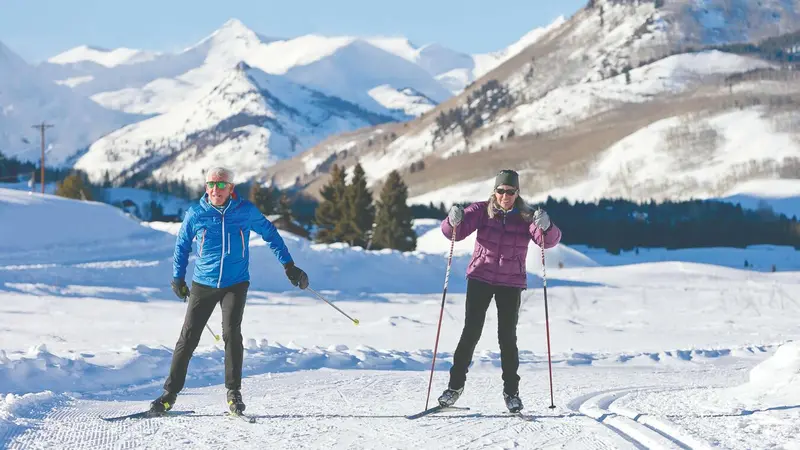
Green Living
Green Living
Growing Young in Nature: How Seniors Heal in the Great Outdoors
Spending time outdoors is a valuable pastime for individuals in their golden years. Besides being exceedingly pleasurable, communing with nature, breathing fresh air, feeling the warmth of the sun or hearing birdsong can markedly improve a person’s physical, mental and emotional well-being. For seniors, exposure to green and blue spaces inspires a more active lifestyle that is both spiritually and socially engaged, thereby offsetting the challenges of chronic illness, disability and isolation . Whether playing Scrabble under the shade of a tree, strolling along the banks of a lake with friends or planting flowers and herbs in a raised garden bed, adding that outdoor element to any activity is a win-win.
Physical Rewards
A vigorous workout outside is not necessary to derive benefits. Fresh air boosts the immune system by increasing white blood cell production. Merely living near trees can extend a person’s lifespan by up to 12 years , according to a Harvard University study of more than 100,000 women over an eight-year period. Another study of 350,000 people in Holland found that green spaces can improve overall health, reduce health complaints, lower the propensity for psychiatric illness and engender a general feeling of improved health.
“Exposure to natural light fosters the synthesis of vitamin D, which is crucial for bone health and mood regulation,” says Dr. Ryan Sultán, an assistant professor of clinical psychiatry at Columbia University. “Participating in outdoor activities such as walking, gardening or simply enjoying nature contributes to improved physical fitness.”
Gardening improves physical strength, flexibility and overall health and quality of life. Older adults that regularly take walks report less pain and sleep problems compared to adults that don’t get outside every day. Nature also promotes healthier blood pressure, higher energy levels, lower heart rate, reduced stress, less chronic pain and a reduction of illnesses such as diabetes, cardiovascular disease, cancer and respiratory issues.
Mental and Cognitive Improvements
Nature offers mental and cognitive benefits to seniors. While simply viewing pictures of natural settings can reducemental fatigue, a walk outside offers a greater positive impact. A University of Michigan study found that spending time outdoors can enhance memory and attention span by up to 20 percent.
Forest bathing—a wilderness walk while engaging the senses—originated in Japan and has become increasingly popular with older populations. A study in Singapore found that seniors engaged in a horticulture program experienced improvements in sleep, cognitive function and psychological well-being, as well as a reduction in anxiety.
Older populations that engage in more strenuous activities like walking, biking or running in natural settings have a lower risk of mental health issues. Green and blue spaces foster feelings of renewal, restoration and spiritual connection, while physical activity in such settings enhances mood, reduces depression risks, lowers stress and improves cognitive function.
Emotional and Social Benefits
Loneliness and isolation greatly impact seniors, and social interactions outside can help alleviate some of this loneliness. Nature provides space for multi-generational social interaction and engagement, including planned activities with friends and family or impromptu gatherings with neighbors. Those with access to green space have a stronger sense of unity and belonging with their community.
“Mindful walking is a simple way to get started building a relationship with the outdoors and is conducive to experiencing nature in a positive way while being present,” says John Dattilo, Ph.D., a professor in leisure studies at Pennsylvania State University. “To do this, we pay attention to the environment and notice things through our senses. We focus on what we are grateful for, including our surroundings or other aspects of our life.”
Overcoming Barriers to Outdoor Engagement
The main barriers stopping seniors from getting outside are mobility limitations, accessibility issues and safety concerns. One study found reduced mobility was the primary factor limiting nature experiences for older populations. “If we have a fear of falling, then we reduce our movement. If we reduce our movement, then we are more likely to fall, and that spirals,” says Dattilo.
Caretakers can help by encouraging seniors to pick the activities they want to do, without stifling their interests. “If people pursue activities they have interest in, they are much more likely to experience leisure,” says Dattilo. “And leisure gives us meaning and purpose in life. It also helps us feel authentic. It’s not as much about recreational activity, and more about engagement.”
If seniors want to venture beyond their homes, choose accessible locations where there are paved paths, shelter and bathrooms. Come prepared for the activity. Dress comfortably, use mobility aids, apply sun protection and bring water and snacks. For those that are uncomfortable spending time in nature alone, invite others or join a senior-friendly program, class or event. If leaving the home or bed is no longer an option, give virtual reality a try, which has been shown to provide seniors with some of the benefits of the outdoors. There are many commercially available virtual reality applications such as Google Earth VR and Wander on Meta Quest.
Kelcie Ottoes is a writer for sustainable businesses and frequent contributor to Natural Awkenings.
Original article published at Natural Awakenings


 By
By






